How to Get from Osaka to Fukui: Train, Bus, or Car? | 2025 Travel Guide

We will explain how to get from Osaka to Fukui, comparing the cost, travel time, features, etc. Travel has become more comfortable with the extension of the Hokuriku Shinkansen. If you are planning to travel to Fukui, please make use of this 2025 updated transportation guide.
-
Table of Contents
- What kind of place is Fukui? Introducing its attractions and access
- [Comparison table] Main means of transportation from Osaka to Fukui
- The fastest route! Comfortable access via Thunderbird + Hokuriku Shinkansen
- Use a transit app
- Benefits of using Japan Rail Pass
- How to purchase JR tickets (for tourists visiting Japan)
- If cost-effectiveness is a priority, "express buses" are also an option!
- If you want to take a leisurely trip, we recommend driving! Drive from Kansai to Fukui
- Must-see tourist spots when you come to Fukui!
- Great access to tourist spots! Recommended hotels in Fukui
- Choose the access method that suits you best and enjoy your trip to Fukui
What kind of place is Fukui? Introducing its attractions and access
Facing the Nihon Sea, Fukui Prefecture has many tourist sites where nature and history come to life, such as the Dinosaur Museum, Tojinbo, and Eiheiji. In spring 2024, the Hokuriku Shinkansen will be extended to Tsuruga, making access from the Kansai region much easier.
There are three ways to get from Osaka to Fukui: by train, express bus, or car. Compare the travel time, cost, and features of each to find the best way to get there for you.

[Comparison table] Main means of transportation from Osaka to Fukui
Train (express + Shinkansen or conventional line)
◆Time required: Approximately 2 hours to 2 hours and 30 minutes
◆Price: 5,640 yen to 7,090 yen
◆Characteristics: It is the fastest and most comfortable way to travel. There are many buses, so it is recommended. The fare and travel time vary depending on the number of transfers and the route.
Express bus
◆Time required: Approximately 4 hours
◆Price: 2900 yen to 6,000 yen
◆Features: It is cheap and direct, so we recommend it if you have the time.
Car (private car, rental car)
◆Time required: Approximately 2 hours 55 minutes to 4 hours
◆Fee: Expressway fee 5,560 yen + gasoline fee
◆Characteristics: You can move freely, so you can enjoy sightseeing without being tied down by time. It may be cheaper than the train when you are sightseeing with a large group such as a family. It is also easy to move luggage.
The fastest route! Comfortable access via Thunderbird + Hokuriku Shinkansen
The fastest way to get from Osaka Station to Fukui is to combine the Thunderbird Express and the Hokuriku Shinkansen.

[Route] JR Osaka Station → (Thunderbird Express) → Tsuruga Station → (Hokuriku Shinkansen) → Fukui Station [Time required] About 2 hours [Fee] About 7,090 yen (3,410 yen for the boarding ticket + 3,680 yen for the express ticket = 7,090 yen in total)
[Recommended point] Japan Rail Pass can be used on all JR lines. It is convenient because you can use the internet reservation service "e5489" and Japan Rail Pass.
Thunderbird Express + Hapiline (cheap)

[Route] JR Osaka Station → Tsuruga Station (Thunderbird) → Fukui Station (Hapi-line-Fukui)
[Time required] Approximately 2 hours and 30 minutes [Fee] Approximately 5,640 yen [Note] The Hapi Line is not a JR line, so it is not covered by the JR Pass.
Use a transit app
◆Google Maps
[Features] Supports English, ideal for transfer information and timetables.
◆NAVITIME Japan Travel
[Features] Includes comprehensive tourist information for foreign visitors.
◆JR West Online Booking
[Features] Convenient for making reservations for express trains and Shinkansen trains.
Benefits of using Japan Rail Pass
You can get to Fukui at a great price by using the Japan Rail Pass, which allows unlimited travel on JR lines throughout Japan. This pass is compatible with all JR lines, including the Thunderbird Express and the Hokuriku Shinkansen, making it ideal for traveling over a wide area. In particular, by using these express trains, you can arrive from Kyoto to Fukui in about 2 hours.
The Japan Rail Pass can be reserved online in advance, without the need to purchase at stations. This allows you to smoothly prepare for your trip from the planning stage, and make the most of your time at your destination.
For more information about the Japan Rail Pass, please visit the official Japan Rail Pass website (English). The website provides all the necessary information, such as pass types, terms of use, and reservation methods, so you can prepare for your trip with peace of mind.
How to purchase JR tickets (for tourists visiting Japan)
1. Purchase at the JR Ticket Office
This is a way to purchase tickets face-to-face with a station attendant. It is very convenient if you have any travel-related inquiries or questions. Many stations also have English-speaking staff, so foreign visitors travelers can use it with confidence. It is the best way to get direct advice on detailed itineraries and train selection.
2. Purchasing from a ticket machine
The touch-screen ticket vending machines are multilingual and easy to operate. They are ideal for people who want to choose tickets at their own pace or purchase tickets without worrying about time. You can easily purchase tickets by simply following the instructions on the screen, such as selecting your destination and specifying a time.
3. Online booking
This method involves making reservations online in advance using JR West's official reservation site "e5489" or "Smart EX." It is extremely convenient as you can easily make reservations at home or while on the move. By reserving in advance, you can be sure to secure a seat, especially during peak seasons or when using popular trains. Discounts and special offers may also be available when reserving online. If you want to avoid crowds at the station, we recommend reserving online .
If cost-effectiveness is a priority, "express buses" are also an option!

The Osaka- Fukui express bus takes longer, but is perfect for those looking to keep costs down.
Main Routes
[Route] Osaka Umeda or JR Osaka Station Expressway Bus Terminal → Fukui Station East Exit [Journey Time] 3 hours 30 minutes to 4 hours 30 minutes [Price] 2,900 yen to 6,000 yen [Note] Prices vary depending on whether it is a weekday or holiday, and whether it is daytime or late at night.
If you want to take a leisurely trip, we recommend driving! Drive from Kansai to Fukui

If you are traveling by car, we recommend using the expressways, which are smoother than the local roads.
Traveling by car offers great freedom and the advantage of being able to stop off at tourist spots along the way.
Trains and buses require you to keep track of specific times, but cars allow you to go at your own pace and are easy to carry around if you have a lot of luggage. If you don't want to be rushed or have a lot of luggage, we recommend traveling by car, even though it will take a little longer and cost more.
Also, if you are traveling with a large group such as a family, traveling by car may be cheaper.
Expressway Route
[Route plan] Toyonaka IC → Hokuriku Expressway → Fukui Kita IC
[Time required] 2 hours 55 minutes [Cost] Expressway fee 5,560 yen + gasoline fee
General road route
[Route idea] Kitakami to Fukui using the Kosai
[Time required] Approximately 4 hours [Fee] Gasoline fee
Must-see tourist spots when you come to Fukui!
1. Fukui Prefectural Dinosaur Museum

The Dinosaur Museum is one of Fukui 's most popular tourist spots, visited by more than 1.2 million people a year. It is said to be one of the three largest dinosaur museums in the world, and more than 50 complete fossil skeletons are on display in the vast column-free space. It will be reopened in the summer of 2023, and is a very popular tourist spot for families with children and dinosaur lovers.
access
Public transportation: Take the Echizen Railway " Katsuyama Eiheiji " from JR Fukui Station to the last stop " Katsuyama Station" for about 55 minutes, Katsuyama transfer to a direct bus to the Dinosaur Museum for 12 minutes.
Car: About 50 minutes from JR Fukui Station
2. Daishizan Seidaiji temple Echizen Great Buddha(Echizen Daibutsu)
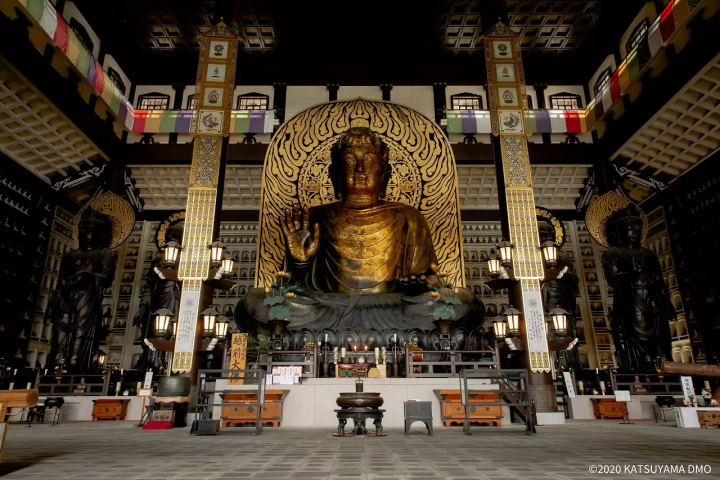
The Echizen Great Buddha(Echizen Daibutsu) at Daishizan Seidaiji temple is the tallest indoor seated statue in Japan, surpassing the Great Buddha of Nara, at 17m tall. Inside the Great Buddha Hall, where the Buddha is located, there is a stone Buddha wall with 1281 stone Buddha statues lined up, and in recent years it has become a popular spot for foreign visitors tourists. Depending on the season, you can see a magnificent performance called "Special Viewing of the Sea of Clouds" only in the early morning and evening.
access
Public transportation: Take the Echizen Railway " Katsuyama Eiheiji " from JR Fukui Station to the last stop " Katsuyama Station" (approx. 55 minutes), then take a taxi or bus from Echizen Railway Katsuyama Station (approx. 10 minutes).
Car: About 50 minutes from JR Fukui Station
Hotels near Daishizan Seidaiji temple Echizen Great Buddha
3. Heisenji Hakusan Shrine
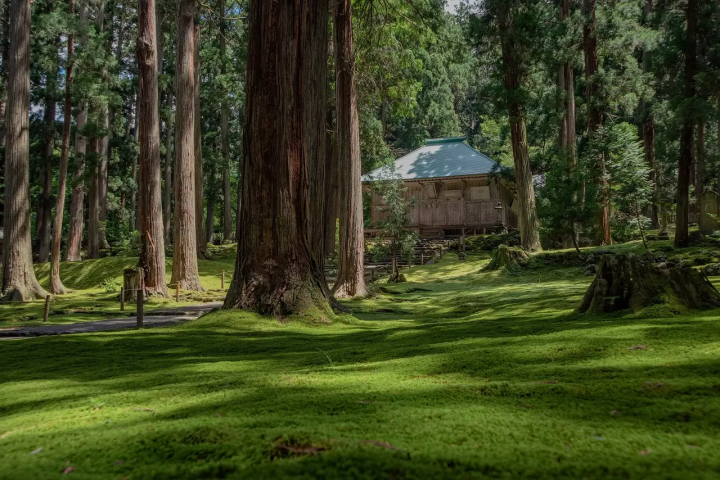
Heisenji Hakusan Shrine is a shrine with 1300 years of history. It flourished as a base for Hakusan faith, and is said to have been home to as many as 8000 warrior monks at its peak 600 years ago. Today, the shrine is famous for its beautiful green carpet of moss. We recommend visiting when there are few people, as you can leisurely enjoy a typically Japanese shrine.
4. Tojinbo

Tojinbo, located in Sakai City, Sakai City, is designated as a natural monument of Japan.
The spectacular rock face stretches for about 1 km, and the columnar joints of pyroxene andesite are an extremely rare sight that can only be seen in three places in the world. It is a representative tourist spot in the Hokuriku region.
Hotels near Tojinbo
Hotels near Tojinbo sightseeing boat
5. Mikatagoko Rainbow Line Summit Park

The Mikata Five Lakes is the collective name for the five lakes that straddle Mihama Town and Wakasa Town. At Rainbow Line Summit Park, you can get a 360-degree view of all five lakes and Wakasa Bay . The lakes have different depths and water quality, and because each lake has a different color, they are also called the "Five-Colored Lakes." It is a mystical, scenic spot.
6. Eiheiji Eiheiji of the Motoyama

Located in Eiheiji Town, Yoshida County, Motoyama Eiheiji is a strict Zen training center with a history of about 800 years. Even today, many monks train there. You can visit the temple for a fee, and you can also try Zen meditation and copying sutras. Please visit Eiheiji, which is full of Japanese atmosphere.
Hotels near Eiheiji Temple
7. Kehi Shrine

Kehi Shrine in Tsuruga City was founded in 702 AD. You will be greeted by a large 11m-tall torii gate, one of the three largest torii gates in Japan and designated as an Important Cultural Property. It is also famous as a power spot, and there are many places within the shrine grounds that are overflowing with energy.
Hotels near Kehi Shrine
Great access to tourist spots! Recommended hotels in Fukui
Hotels near Hotel Harvest Ski Jam Katsuyama
Hotels near Katsuyama New Hotel
Choose the access method that suits you best and enjoy your trip to Fukui
We have introduced how to get from Osaka to Fukui.
I hope this article will be helpful and help you find the transportation method that suits you best.
Please be careful when traveling to Fukui.
Katsuyama City is located in the northeastern part of Fukui Prefecture. The city is located on a river terrace formed along the course of the Kuzuryu River, and is a rural city rich in water and greenery, with commerce and industry based on the local textile industry since the Meiji period, and agriculture and forestry having been thriving since ancient times. Our company is a DMO (tourism region development organization) that works with local communities to develop tourist areas. Katsuyama City is a treasure trove of attractive tourist content, including the Dinosaur Museum and Heisenji Temple! We provide detailed services to customers visiting Katsuyama , such as guided tours that allow many people to experience Katsuyama , the Geo Terminal in the parking lot of the Dinosaur Museum, and the operation of the "Dinosaur Valley Katsuyama" Roadside Station , which opened in June 2020. We are also actively challenging ourselves to create new businesses centered around tourism, aiming to revitalize the town of Katsuyama.
The contents on this page may partially contain automatic translation.







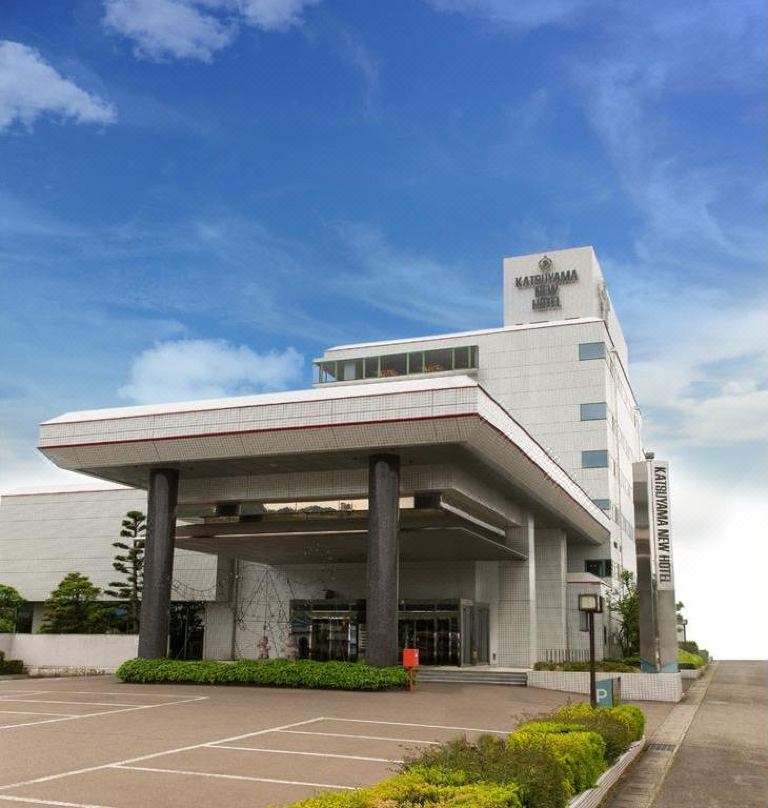


![[2025 Edition] A thorough guide to getting to the Echizen Great Buddha(Echizen Daibutsu)](https://resources.matcha-jp.com/resize/200x2000/2023/05/10-137958.webp)





![[2025 Edition] A thorough guide to getting to Heisenji Hakusan Shrine](https://resources.matcha-jp.com/resize/200x2000/2023/12/15-157184.webp)

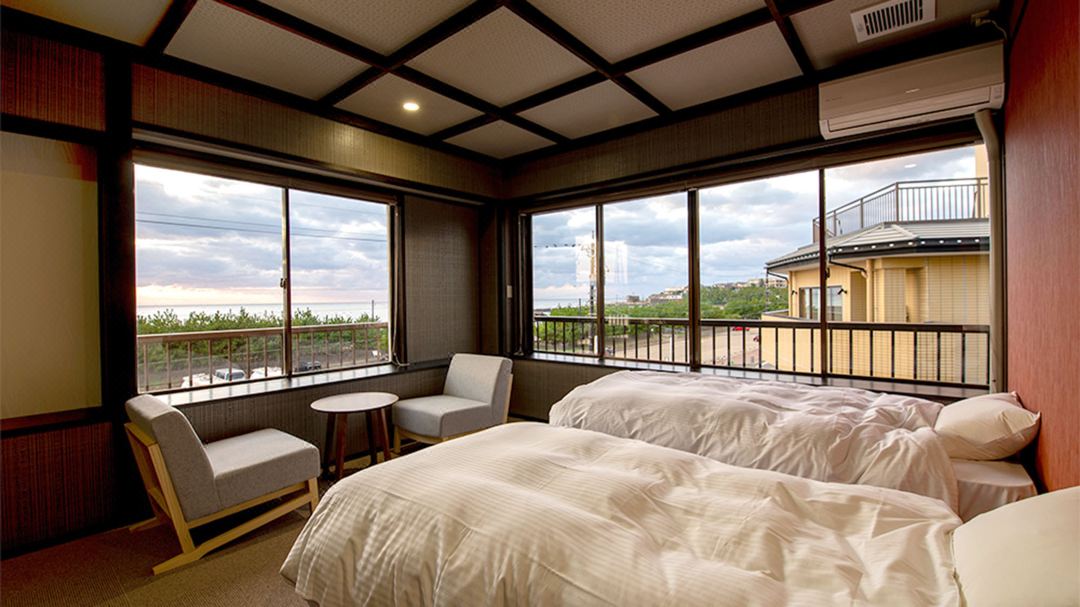






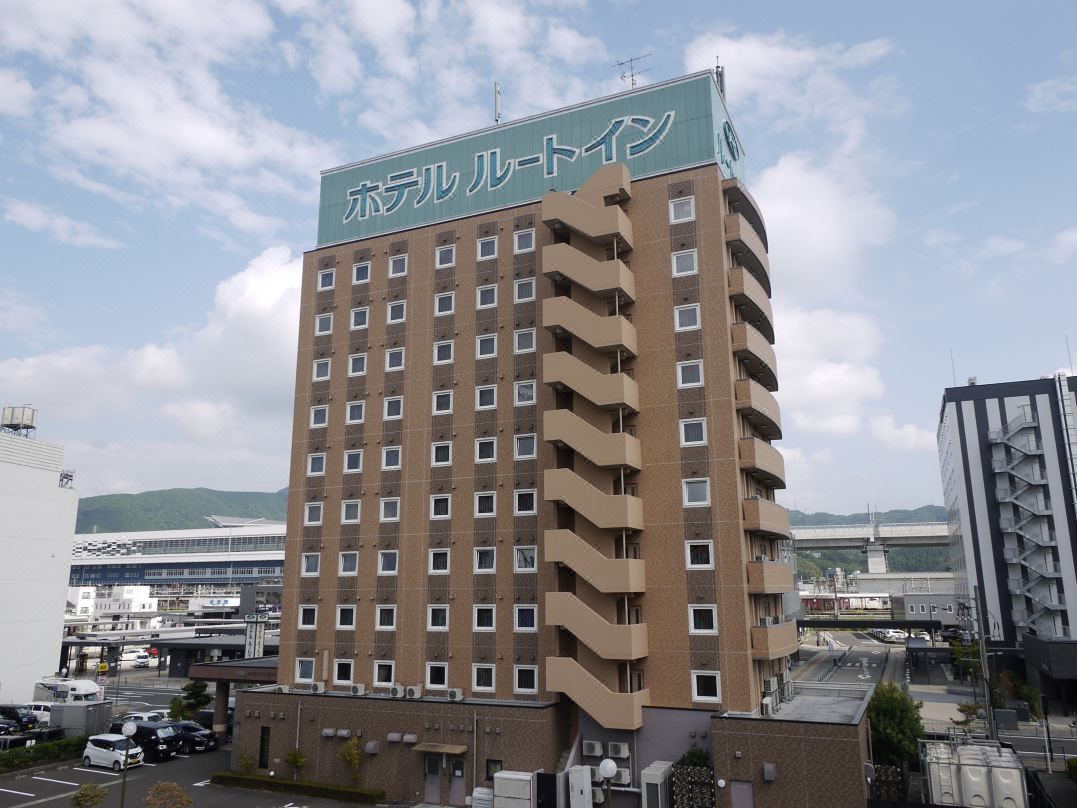
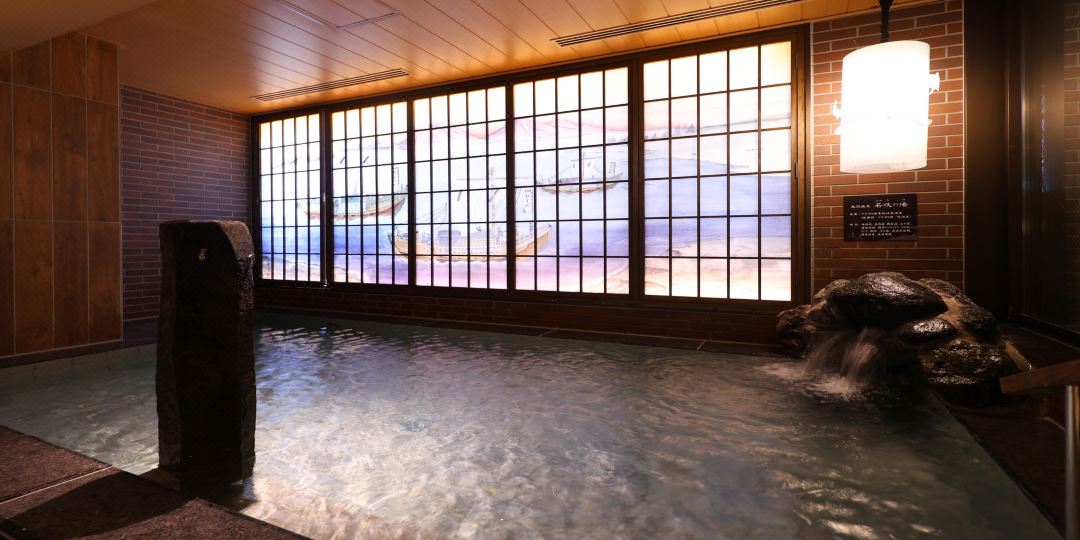





![[2025 Edition] A thorough guide to getting to the Echizen Great Buddha(Echizen Daibutsu)](https://resources.matcha-jp.com/resize/720x2000/2023/05/10-137958.webp)



























![[Just a short distance from Nagoya] Popular Taiwanese YouTuber Alan tours Aichi, Tokoname!](https://resources.matcha-jp.com/resize/720x2000/2026/01/08-255181.webp)

